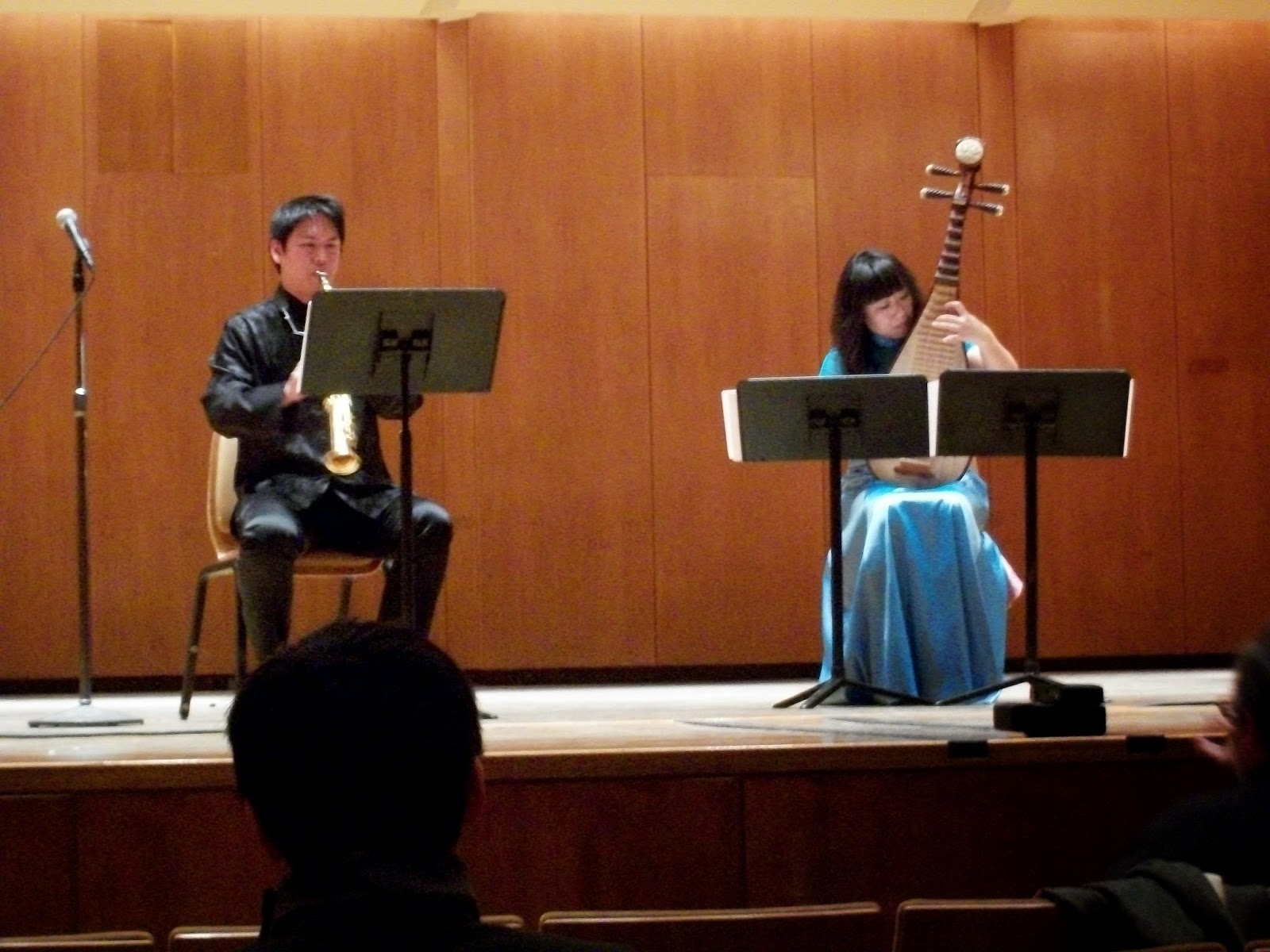Sunday, Day 3, for me began softly, with a lovely pair of duets with soprano saxophone and an instrument called the pipa (pronounced peep-a).
The young man on the saxophone had a beautiful, clear tone. The pipa player was fascinating to watch. A pipa is a four-stringed instrument from China that sounds like something between a mandolin and a lute, being strummed and plucked.
Second on the program for this early recital was an alto player with didgeridoo. Time to wake up, I guess! The man playing didgeridoo sounded great (I've always loved the sound of a didgeridoo) and was a remarkable accompaniment to the sax.
For the last piece, the didg player laid down the traditional instrument and picked up an odd arrangement of pipes. He called it his "sewer sax", being made of sewer pipes. It is played like the didgeridoo, but has an extra pipe end that can be covered with his hand to create two different pitches. Thus, his new instrument can do more than just drone on one note. Outstanding!
Following the recital was a NASA General Membership meeting. Old and new business was discussed. NASA, as an organization, isn't as old as I thought it was, and membership is growing.
Then, Eugene Rousseau lead a masterclass. Here he is, imparting wisdom:
After the masterclass, my mouthpiece and I took another spin through the exhibit hall to try out the Bauhaus saxophones. Bauhaus is a company out of the United Kingdom that focuses solely on saxophones and is starting to distribute in the U.S. They play very nicely, though are a bit heavy (which translates to better sound, ultimately).
By the time this ended, I was badly in need of some quiet time. The third day of many of these conferences and conventions can sometimes feel like burn-out, despite your interest and love of the subject matter. So, I took myself and a book over to the corner coffee house to get in some reading and relaxing. It was my mini-vacation, after all.
Relaxed and well-read, I then headed back to the lecture hall. I took in a performance of a piece for tenor sax and percussion, ably performed by an old friend from way back. Then grabbed the last portion of a performance lecture on the saxophone life and times of 1920s musician Kathryn Thompson. A woman of the jazz age, who reportedly strongly disliked jazz but wrote some sparkling ragtime music for saxophone and taught saxophone in a music school in southern California.
The final two lectures I attended dealt with building up a private lesson studio and teaching critical thinking to students. With these ideas and thoughts rattling around in my overwhelmed, slightly sleep-deprived brain, I strolled back to the car and headed for home.






















